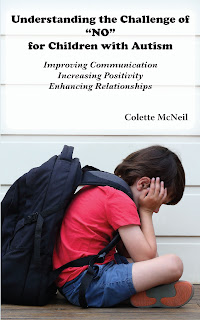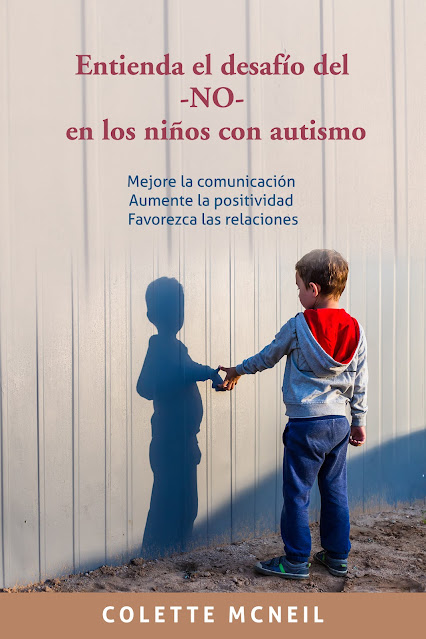Excerpt from Understanding the Challenge of "No" for Children with Autism (McNeil): No Cookies - Dennis

Dennis Standing in the kitchen, cabinet door open, Dennis and Dad are seeking a snack. “Well, Dennis, it looks like we need to make a trip to the store soon. We are out of your favorite items.” Holding his picture communication support device, Dennis requests cookies. Dad shows Dennis a bag of crackers and a granola bar, “No cookies, how about one of these?” Dennis repeats his request for cookies and Dad replies, “No. No cookies.” A typical snack time in Dennis’ house is usually pretty casual. Dennis may receive a package of whatever snack he wants as long as he uses his communication device to make the request. Following his training and routine, Dennis persists with his request for cookies, creating a picture sentence, “I want cookie, please.” Dad answers more firmly, “No cookies.” Feeling confused and reprimanded, Dennis becomes agitated, screams out and stomps his foot. Opening the cupboard wider, Dad encourages Dennis to look inside, “Look Dennis, we...



